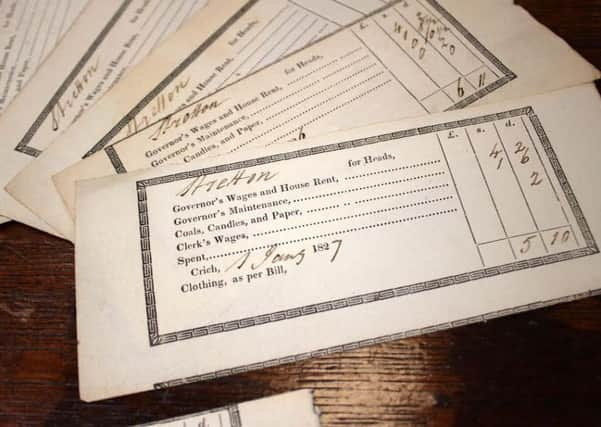Rare bills to be sold at auction


The bills will be offered at the auction, which runs from June 29 to July 1, with a guide price of £50 and £70.
The sale will include other items including important maps, manuscripts, Georgian prints and antiquarian books.
Advertisement
Hide AdAdvertisement
Hide AdCharles Hanson, manager of Hansons Auctioneers and seen on BBC One’s Bargain Hunt, said: “It’s remarkable that a series of workhouse bills dating from April 1826 to March 1827 were discovered in a box of old newspapers.
“The detail on the bills almost sends a shudder down one’s spine when you consider what life must have been like for the inmates of such an institution.
“Each bill refers to the governor’s wages and house rent at four shillings and tuppence for a week, together with her maintenance at one shilling, going on to note the weekly order of coals, candles and paper.”
A Parish Workhouse in Crich existed from 1777, with accommodation for up to 70 inmates. It was first opened by the parish authorities in 1734 on the edge of Nether Common, before the common was enclosed.
Advertisement
Hide AdAdvertisement
Hide AdThose in need were sent to Crich workhouse not only from the local area, but also from further afield, including the parishes of Denby, Melbourne, Mercaston, Pentrich and Willington.
The idea behind the workhouse system was for local parishes to combine funds to support the destitute rather than for each parish to support individuals themselves as previously done – seen as a last resort for those using their services.
The lack of amenities and the harsh regimes were meant to ensure that only those truly in need of assistance would apply to enter.
“The workhouse was a hard place, with inmates often only eating gruel – beer and cheese only being allowed at Christmas. A kind of gruel, called water pottage, consisted of a small portion of oatmeal cooked with boiled onion,” said Charles.
Advertisement
Hide AdAdvertisement
Hide AdMen were housed separately to women and children, which meant that families could not meet.
Adults were then divided into two groups, those unable to work, who were cared for, and the unemployed, who were put to work running the Workhouse together with doing other tasks.
Boys, however, were taught a trade where possible, such as shoemaking. This system carried on in some form until the early 20th Century.
n For more information on the auction, call Charles Hanson on 01283 733988/07725514855 or email [email protected].